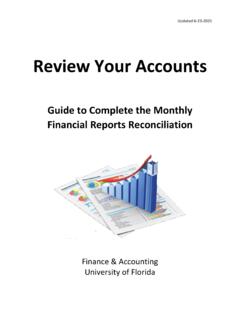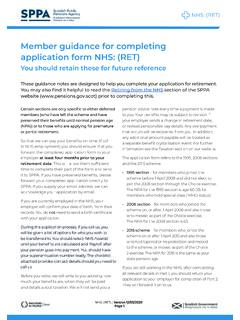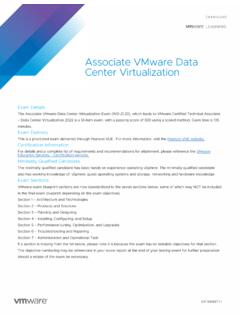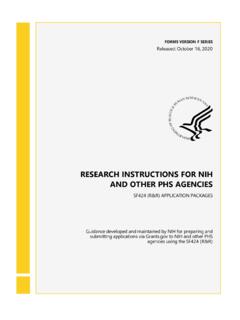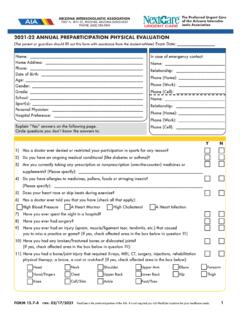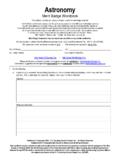Transcription of Importing Commercial Goods into Canada - How to …
1 _____ 2009/SCCP/SWWG/WKSP3/012 Importing Commercial Goods into Canada - How to complete Form B3, Canada Customs Coding Form, When Importing Commercial Goods into Canada Submitted by: Canada Single Window Working Group Capacity Building Workshop 3 Singapore1-4 April 2009 Importing Commercial Goods into CanadaHow to complete Form B3, Canada Customs Coding Form, when Importing Commercial Goods into CanadaBSF5079 (E) Rev. 08 NoteSince Canada Border Services Agency (CBSA) legislation and procedures change from time to time, we recommend that you check with your local CBSA offi ce to ensure that the legislation and procedures described in this publication are still version fran aise de cette publication est intitul e Importation de marchandises commerciales au.
2 2 Part I .. 2 Accounting information .. 2 Cargo control document .. 2 Invoice .. 3 Recap Sheet .. 3 Invoice cross-reference .. 3 Form B3, Canada Customs Coding Form .. 4 Document presentation .. 4 Part II .. 4 General information on tariff classification .. 4 Introduction .. 4 Structure of the classification number .. 4 Chapter 99 special classification provisions .. 5 Part III .. 5 How to complete Form B3 .. 5 Appendix I - Example of a Cargo Control Document .. 15 Appendix II - Example of a Canada Customs Invoice .. 16 Appendix III - Example of a Form B3 .. 17 Appendix IV - Example of a document presentation.
3 18 Appendix V - Example of a page from the Customs Tariff .. 19 Appendix VI - CBSA office codes by region .. 20 Appendix VII - List of country and currency codes (including the states of the United States) .. 23 Appendix VIII - United States foreign trade zones .. 29 Appendix IX - Units of measure .. 41 Appendix X - United States port of exit codes .. 42 Appendix XI - Border Information Service (BIS) .. 47 Table of Contents2 IntroductionThis publication describes the documents you need to submit to the Canada Border Services Agency (CBSA) to import Commercial Goods into Canada and highlights the information you need from each document to complete Form B3, Canada Customs Coding Form.
4 You will find an example of Form B3 in Appendix III of this publication. It is used to account for Goods , regardless of their value, for Commercial use in Canada . The CBSA considers Commercial use as any Commercial , industrial, occupational, institutional or other like use. Note In this publication, we refer to a number of CBSA D memoranda that contain more information on many of the topics we discuss. You can purchase copies of these memoranda by contacting: Government of Canada Publications Public Works and Government Services Canada Telephone: 613-941-5995 (or 1-800-635-7943 in Canada and the United States) Fax: 613-954-5779 (or 1-800-565-7757 in Canada and the United States)Alternatively, you will fi nd CBSA publications, including the D memoranda, under Publications and forms on the CBSA s Web site at IAccounting informationTo account for Commercial shipments, you must present to the CBSA a fully completed accounting package consisting of the following.
5 One copy of the cargo control document (for exceptions to this requirement, see Memorandum D3-1-1, Regulations Respecting the Importation, Transportation and Exportation of Goods , paragraph 31); one copy of the invoice (for more information, see Memorandum D1-4-1, Canada Customs Invoice Requirements); one copy of Form B3 if presented at an automated CBSA offi ce or two copies if presented at a non-automated offi ce; and other forms, permits and certifi cates, such as remission applications, end use certifi cates and the exporter s Certifi cate of can present the CBSA with paper copies of these documents or, if we authorize you, transmit this information to us using electronic data interchange (EDI).
6 For more information on the latter option, contact our Electronic Commerce Unit toll-free at control documentThe transportation company or forwarder will send you a cargo control document to inform you that a shipment has arrived and is awaiting customs clearance. The cargo control document can be a manifest, a waybill or other approved document covering the transportation of the more information on the cargo control document, see Memorandum must meet the invoice requirements outlined in Memorandum D1-4-1 by providing one of the following: a Commercial invoice prepared by any means (typed, handwritten or electronic) containing all the data listed in Appendix A of Memorandum D1-4-1.
7 A Commercial invoice prepared by any means that indicates the buyer and seller of the Goods , the price paid or payable and an adequate description of the Goods , including the quantity contained in the shipment, together with a Form CI1, Canada Customs Invoice, containing the remaining required data; or a fully completed Form can use a Commercial invoice only, as described in the second option above, or any other document containing the same information provided on such invoices to support the declared value of the Commercial Goods entering Canada if any of the following apply: the value of such Goods is less than CAN$1,600; the value of Canadian Goods being returned has been increased by less than CAN$1,600; the Goods qualify unconditionally for duty-free and tax-free entry.
8 Or the Goods qualify for the benefi ts of the concessionary provisions of classifi cation numbers or (special classifi cation provisions) or under classifi cation number either a recap sheet or cross-references to the invoice when Form B3 consists of multiple classifi cation sheetYou must group Goods classifi ed under the same classifi cation number together, and, for each group, show the following information on a recap sheet: duty rate, Goods and services tax (GST) treatment ( rate or exemption code) and excise tax rate, if applicable; total price paid or payable; and exchange rate and conversion value in Canadian recap sheet must also contain the transaction number and total number of invoice pages.
9 Prepare a separate sheet for each invoice. However, you must summarize the recap sheets so that we can verify the summary against Form B3. In most instances, the total invoiced amount and the total shown on the recap sheet(s) will agree. You have to clearly indicate an acceptable reason for any difference between the recap and invoice cross-referenceThe cross-reference shows the relationship between each of the invoice lines and pages and the appropriate classifi cation line on Form B3. It consists of the following: the B3 line number; the invoice page number; the invoice line number; and the invoice line value as it appears on the invoice before any additions or have to account for each invoice line.
10 There will be as many references to a particular Form B3 line as there are lines classifi ed in the invoice. The invoice cross-reference must also contain the transaction number and the total number of invoice information on cross-referencing and invoice recapitulation can be found in Memorandum D17-1-1, Documentation Requirements for Commercial B3, Canada Customs Coding FormInstructions on how to complete Form B3 are outlined in Part III of this presentationTo help the CBSA process and release your Goods as quickly as possible, you must present the required documents in the order indicated in Appendix IV of this publication. The set designation indicates the destination of each document following our IIGeneral information on tariff classifi cationIntroductionThe Customs Tariff is divided into 21 sections.






